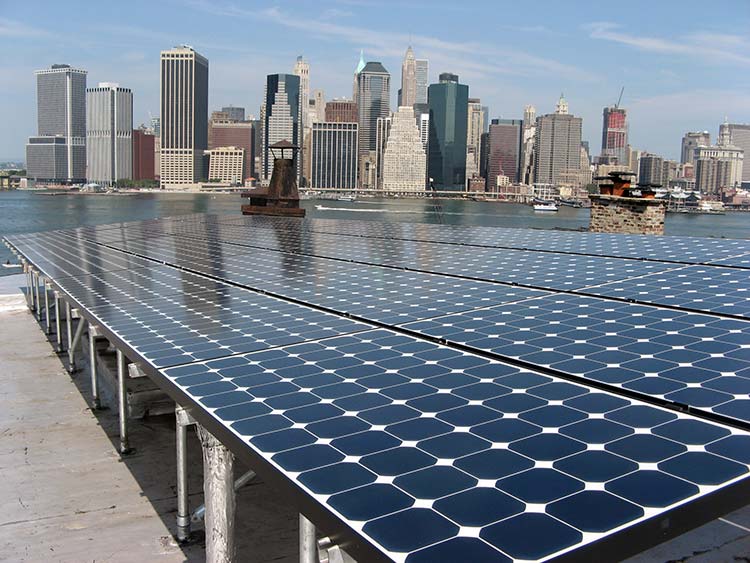REopt Identifies Solutions To Improve Economics of Large-Scale, Grid-Integrated Solar in New York City

A solar PV rooftop system in New York City. Photo by Aeon Solar
NLR worked with Sustainable City University of New York to evaluate a range of solutions for improving the economics of large-scale (over 200 kilowatts [kW]) solar photovoltaic (PV) interconnection in New York City. The solar market in New York has been growing steadily in recent years and developers have been pursuing large-scale solar projects in New York City; however, the interconnection of solar PV, especially on a large scale, on Con Edison's network and radial grid can cause adverse technical and reliability impacts in certain locations.
To mitigate these impacts, NLR used the REopt® platform to model a range of potential solutions, including adjusting the size or orientation of the PV system, curtailing excess production, adding storage, or a combination of these options. NLR modeled the new value of distributed energy resources compensation structure, which considers the time and location of the generation in its compensation structure, and found energy storage is the most cost-effective solution for reducing interconnection costs. Using energy storage to limit or eliminate energy export from a PV system improves project economics over the base case of installing stand-alone PV under all rate classes evaluated in this study.
This analysis is being used to help project developers better understand grid integration strategies, impacts on project costs, and solutions that can be implemented to improve the economics of large-scale PV in New York City.
Related Stories
NLR technical report: Grid Ready: Strategies for Interconnecting Large-Scale PV in New York City
NLR technical report: New York Solar Smart DG Hub-Resilient Solar Project: Economic and Resiliency Impact of PV and Storage on New York Critical Infrastructure
NY Solar map: https://nysolarmap.com/
Sponsors
NY-Sun
Key Partners
City University of New York
Con Edison
Contact
Share
Last Updated Dec. 6, 2025
